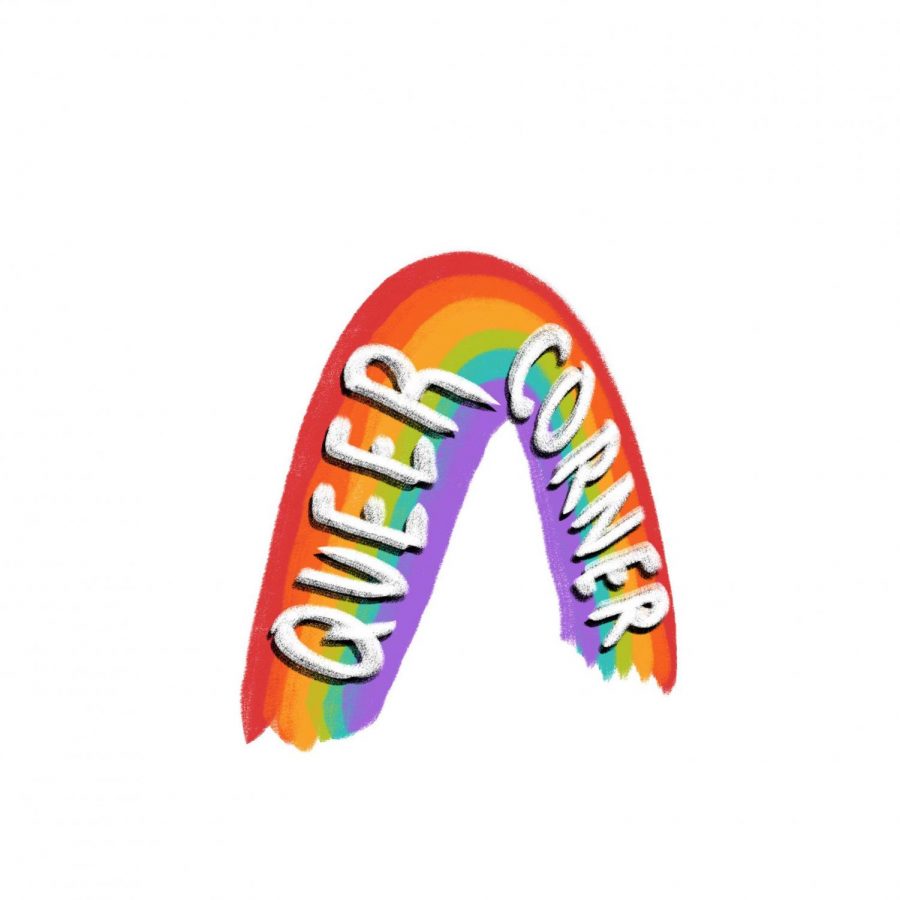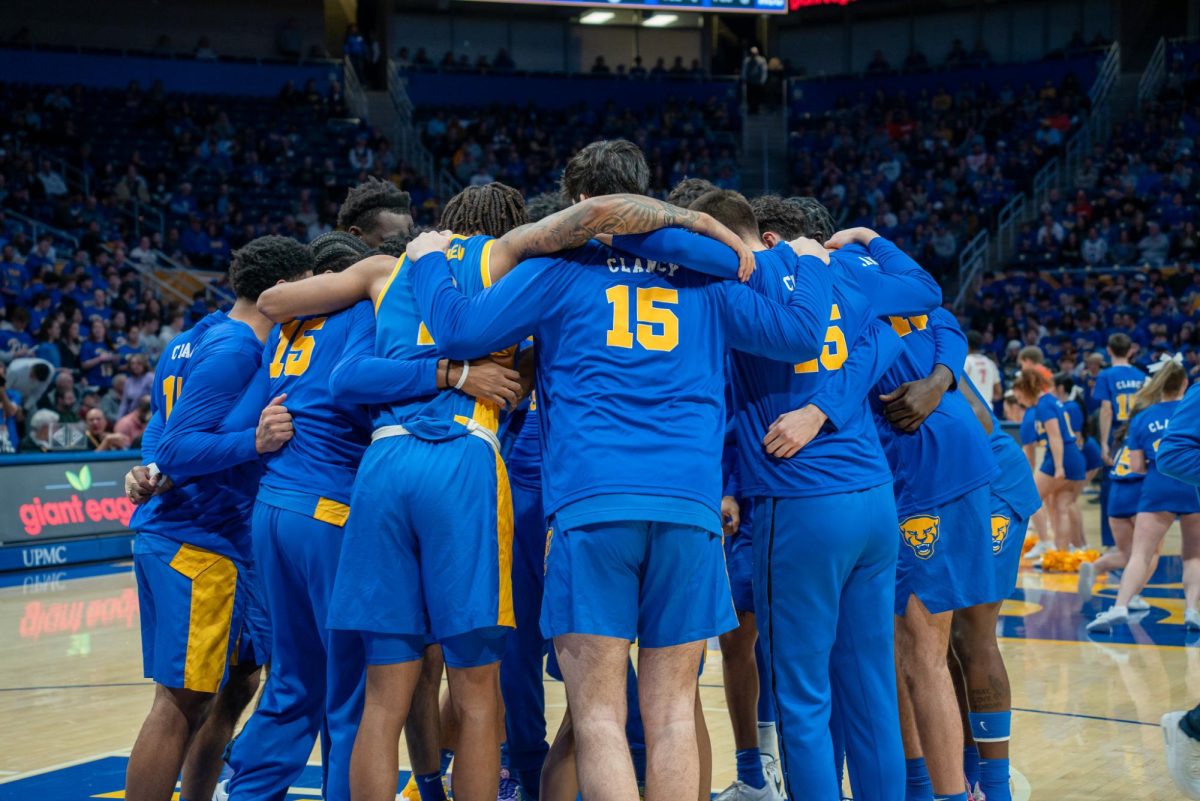The Queer Corner | Out of the metaphorical closet, into the literal closet
The Queer Corner is a biweekly blog exploring LGBTQ+ community and culture.
March 18, 2021
Working as a personal stylist, it’s clear to me that my definition of “on-trend” differs from my client’s. To some of my clients, tie-front tops and distressed boyfriend jeans are trendy. To me, oversized clay earrings and brightly patterned button-up tops are what’s hip. I have a distinctly queer fashion sense, but there’s a good reason for that.
Queer people have a history of community-specific fashion. When we wear certain clothing, jewelry or make-up, we signal to other members of the community that they’re safe with us. At times, it’s a nice way of gauging whether or not someone will understand all of your “Ru Paul’s Drag Race” references. Other times, it’s necessary for our survival.
Our society puts a lot of emphasis on clothing. Today, it’s normal to see a woman wearing pants, but in the early 1900s, a woman in pants was still somewhat taboo. At the time, pants signaled masculinity, and donning them demonstrated a departure from a woman’s femininity. Breaking gender roles in this way was more than a social faux pas. If a woman wouldn’t wear a skirt, she was a problem that needed to be fixed. Suffragettes and early feminists fought for the right to wear pants without fear. Without the stiff corsets and heavy skirts, it would be much easier to move around, care for the home and, of course, advocate for the right to vote.
For lesbians in the early to mid 1900s, pants represented something else. While functionality was important, pants were a departure from heterosexual femininity. In the 1950s and ‘60s, hidden clubs allowed queer women to escape the confines of patriarchy if only for the night. Here, some women put on suits and slicked back their hair to explore their masculinity. Others enjoyed expressing their femininity in dresses and skirts, and some would experiment with the spaces in between or outside of the binary. While some women expressed their sexuality beyond the club, it was safer for many to stay in the closet.
For queer men, it could be even more dangerous. While feminists argued that wearing pants aided women in their homemaking duties, heterosexual men were not advocating for the right to wear skirts. It was clear that skirts were a woman’s garment. If you thought departing from femininity was bad, it was even worse to break masculine gender roles. Women were (and to some extent, still are) seen as inferior to men. Under patriarchy, it makes sense that women would want to wear pants. Women, too, understand the appeal of masculinity, but men should not want to be feminine. Often, men who publicly rejected masculine gender roles were met with violence, and many were killed.
It would be nice to say that times have changed completely. Despite our progress, however, people who challenge gendered fashion norms may still be met with resistance. In the 1980s and ‘90s, gay men and trans women of color established an entire world away from the violent eyes of patriarchal society. Ballroom culture and drag fashion eventually shaped the mainstream (remember Madonna’s “Vogue?”), but many of the gay and trans individuals who created the culture were unfortunately killed by the AIDS epidemic. While it’s more acceptable for queer people to transgress fashion boundaries, doing so is never without risk.
I founded my high school’s Gay-Straight Alliance in 2016. I remember GSA kids wearing flannel tops, studded belts and rainbow everything (myself included). One of my friends carried a typically feminine accessory. When students overheard a teacher inquiring about it, they wrote the f-slur on my friend’s locker and sent him death threats. His parents knew he was gay, but he didn’t know if he was safe when he went to school. We knew his story wasn’t a rarity. He was just glad no one took it any further.
One day, I was called into the office for wearing a particularly flamboyant top. Apparently, a white t-shirt that said “The Gays” wasn’t school appropriate. Luckily, my Dad knew about the shirt, and he supported me. When the vice principal called home, I knew I was safe. I wore that shirt all day until the vice principal had me button up my flannel to hide the text. Of course, I got some weird looks. One of my teachers mentioned that she didn’t approve, but I was never afraid for my life. There are plenty of kids who wouldn’t be able to say the same. Some girls waited to put on their rainbow bracelets until their parents couldn’t see. Some boys would put on makeup in GSA and take it off before they left. They didn’t know what would happen if people saw.
The clothes we wear say a lot about who we are, but it can be dangerous if you say the wrong thing to the wrong people. As a community, we’ve found ways to express ourselves without fear, but we shouldn’t have to hide. Even in the days of hidden lesbian clubs and underground ballrooms, queer people knew what to look for. Today, we have new trends to express ourselves and create community. Earrings are a queer staple at the moment, and one of my personal favorites.
When Black women popularized big bamboo earrings in the 1980s, gay men and transgender women drew inspiration from this popular trend and often wore a single dangly or studded earring. The trend fell out of mainstream popularity as more and more people associated it with gay men. Today, a single dangly metal earring is back, but queer women have taken to DIY-ing their own earrings out of clay or everyday objects. It may not seem like a transgression of gendered fashion, but it challenges the expectation that women need to wear something expensive or sparkling to look beautiful. It’s about having fun, being creative and expressing something that is entirely queer. Yes, they’re a trend, but they’re also a product of the long, dangerous and critically important history of queer fashion. Go forth and wear your full-sized kazoo earrings with a renewed appreciation for the individuals who made this trend possible.
Rachel writes about queer culture, the queer community and navigating life beyond the binary. Talk to them at RAB252@pitt.edu.



